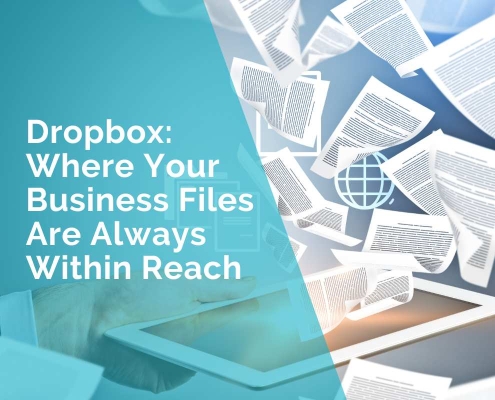7 Reasons Every Online Business Needs An Inbound Number
If you’re running an online business, you know full well how important marketing is in getting some sales.
Moreover, you’re probably very familiar with the more popular ways of bringing online leads to your business, like social media marketing and search advertisements.
However, something that you may overlook is using a business phone number. Specifically, an inbound number.
An inbound phone number is a powerful communication tool that can enhance business-customer communication.
Unlike a personal phone number, a business inbound number caters to businesses specifically, accepting inquiries from multiple callers through a customisable rerouting system.
Besides its primary function of accepting callers, it’s also a potent marketing, data gathering, and operational tool with its wide array of features and other perks.
If you’re on the fence about whether to buy an inbound number or not, read on. We’ll lay down seven reasons why you should heavily consider getting a business phone number for your company.
Let’s get straight into it!
1. Boosts Your Professional Image
Having an online presence is essential for any online business. But you shouldn’t solely rely on the Internet to reach your potential clientele.
An inbound phone number, such as a 1300 or 1800 number in Australia, can be an excellent way to stand out from the competition. The reason is simple: with it, you signal to potential callers that you’re running a professional and legitimate enterprise.
The fact that they’re calling a non-personal number can go a long way in enhancing customer trust.
This is because such a number is often only exclusively attached to business establishments, which can ward away feelings of distrust and suspicion that customers may harbour when calling a personal number.
Furthermore, this enhanced customer perception can be a tipping point for them to choose you over other competitors who may not have this number. Conversely, having an inbound number puts you at an even playing ground with your competitors if they’re using one as well.
So if you want to stand out against your local competition and gain customer trust immediately, get an inbound number to elevate that trust factor.
2. Allows Customer Interactions at Scale
With a personal phone number, you’re limited to just one line connected to one end device.
This can cause callers to be met with a busy line if another caller is currently on it, which can be a frustrating and time-wasting experience. So much so that it can lead to callers developing a negative impression of your company’s services altogether.
With an inbound phone number from services like Telcoworks, this problem is virtually eliminated. This is because an inbound number can take on multiple callers calling the same number and automatically reroute them to different open-end lines within the organisation.
So, for instance, if you operate a call centre business, you can set up your call centre department’s existing technology to take multiple calls from multiple different people calling your business’s public inbound number.
The inbound number’s built-in system will do the rerouting according to your pre-instructions, ensuring that each caller has an open recipient that can service them.
You can take as little or as many calls as you desire, simply choose a plan that best fits the peak call volume of your company. This multi-call feature can reduce wait times and bolster operational efficiency, in turn, leading to improved customer impressions of your business.
3. Provides Call Analytics
Another perk of an inbound number for businesses is its comprehensive data analytics. With a personal phone number, you only get your caller data, call history, and not much else.
However, with an inbound number, you have a wealth of data at your fingertips—tracking inbound metrics such as call duration, peak call times, and the geographical locations of callers, as well as outbound metrics like conversion rates and call volumes.
Given this, you can get a lot of extractable information from your customers simply by using an inbound number.
For one, this data helps you understand how customers interact with your business, which you can use to identify areas for improvement in your marketing and operational strategies. It can also help your customer service team continuously find patterns and continuously improve their processes with backed-up points.
Data is crucial for allowing businesses to operate with the least risk and resistance possible, so be sure to leverage it to your fullest advantage, given the opportunity.
4. Improves Operational Efficiency
An inbound phone number significantly improves the accuracy and speed of key functions of your business. It can even automate manual processes, decreasing the number of working hours for your staff—thus leading to a decreased need for manpower and lower costs overall.
For example, an inbound number fulfils the function of a receptionist, automatically forwarding callers to their intended department at the click of a button.
Furthermore, businesses can also set up interactive voice response software to help callers get into contact with their respective departments without even having to go through another human.
With this added speed and precision, business operations can flow more smoothly, improving customer satisfaction and employee productivity all at once.
5. Gain Access to Remote Work and Global Leverage
Another perk of having an inbound number is that it can be contacted from anywhere around the globe. Customers can call a 1300 number, for instance, while only paying their local call rates. This can help you achieve a higher profit ceiling for your business.
It also helps you relocate with ease since you can use the same number regardless of where you are in your respective country.
By using inbound number technology, you can also allow a virtual team to handle the calling process themselves, freeing up your time significantly while maximising cost-cutting measures through hiring off-shore talent in lower-cost-of-living countries.
This team can get in contact with one another remotely too, which helps massively in streamlining communications.
Conversely, if a customer calls a personal phone number from out of state, they’ll have to pay significantly more per call—which can be off-putting enough to stop them from getting in touch with your company in the first place.
In short, an inbound number is beneficial since it helps you tap into a broader market while also allowing you to operate from anywhere around the world. This global reach can boost both customer and employee satisfaction considerably.
6. Offers Scalability
Looking to expand your business idea beyond your current community? With an inbound number, that won’t be a problem.
As your call volume increases, your inbound number can scale alongside it. It certainly won’t be the bottleneck in accommodating the surge. Most providers have flexible plans that businesses can switch to at any time, whether it’s an upgrade or a pruning to cut costs.
The reason for this scalability lies in an inbound number’s inherent automated call distribution and queue management features. These ensure that customer inquiries are handled efficiently, even during peak times.
Regardless of your current business size and trajectory, an inbound number grows with you. This adaptability helps you tweak your operations the best way you see fit, given current market and industry conditions.
7. Supports Marketing Campaigns
Another cool feature of an inbound number is its utility for testing out different marketing campaigns.
For instance, you can assign unique inbound numbers to different marketing channels or campaigns, and then monitor which assigned inbound number is performing well and converting to sales.
This concept is known as split testing, and it helps you understand customer preferences, which can give you useful information on how to best optimise your marketing efforts relative to the collected data.
This, in turn, can bring more traffic to your online business and get you to reach your target demographic with better effectiveness.
***
Author: Rebecca Lee












